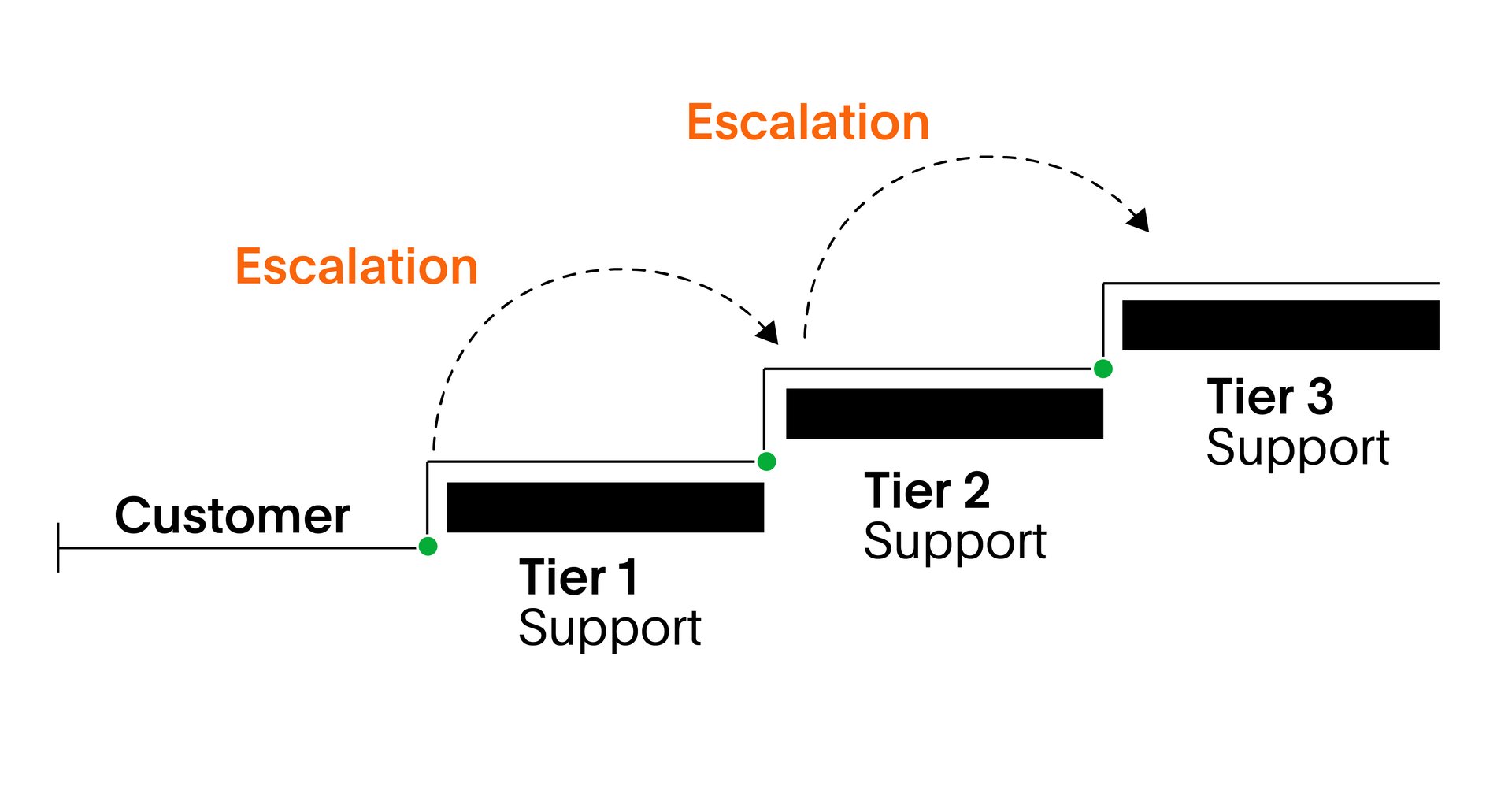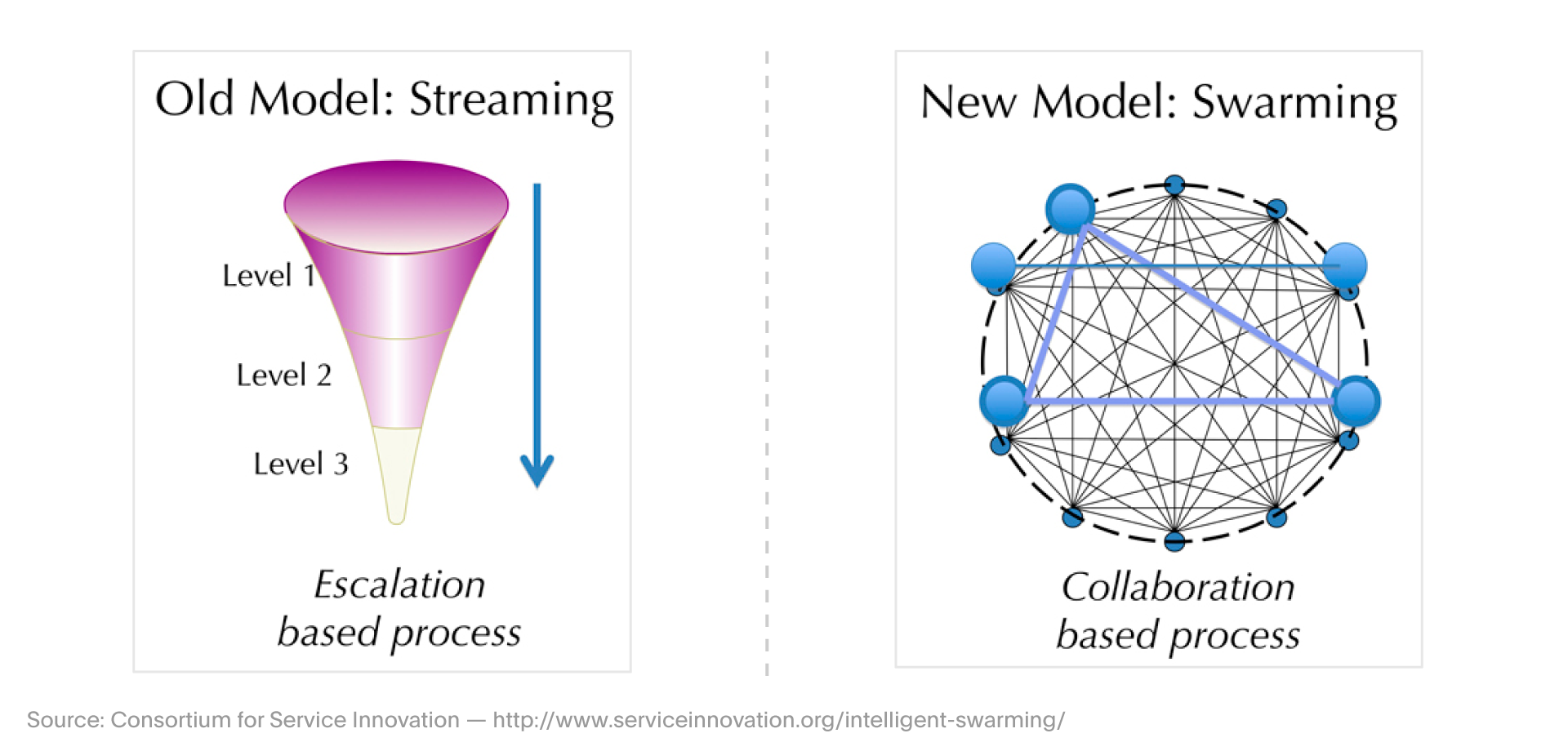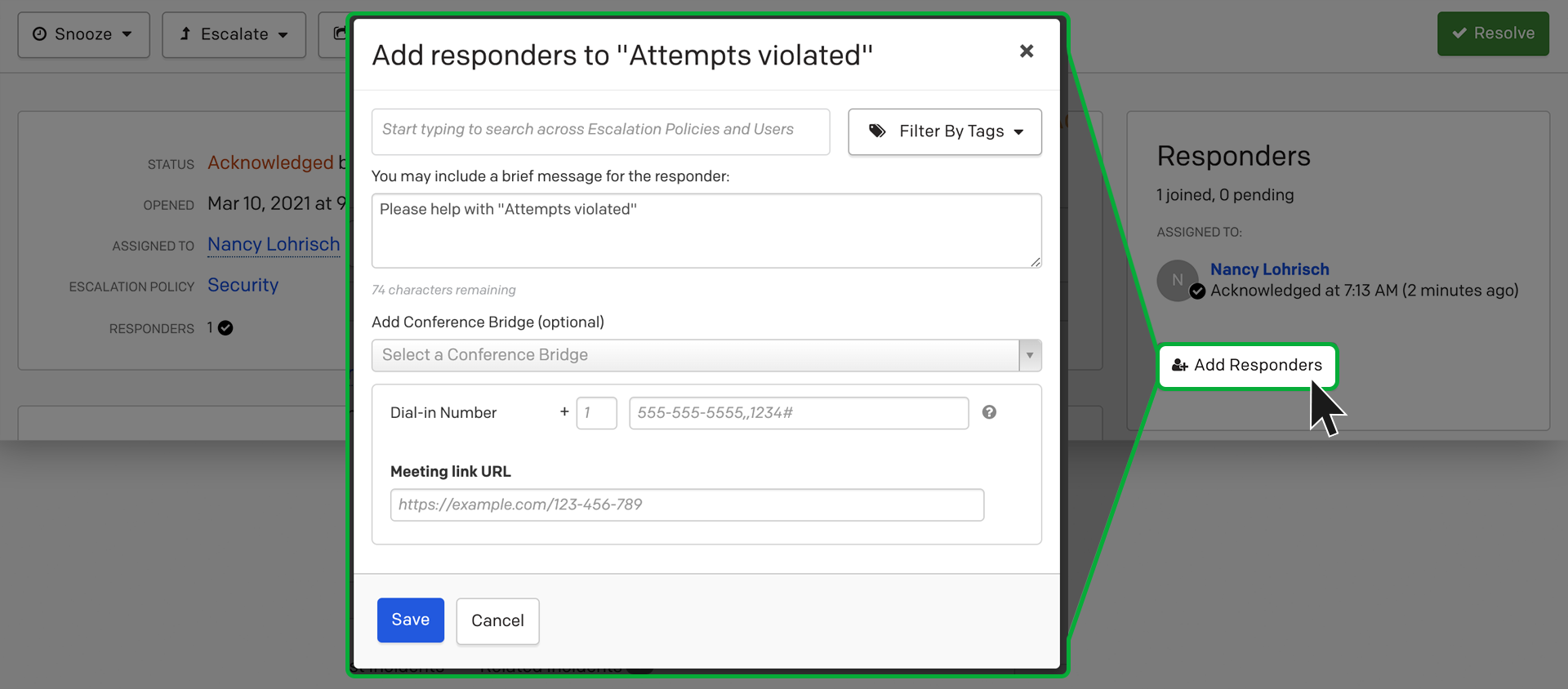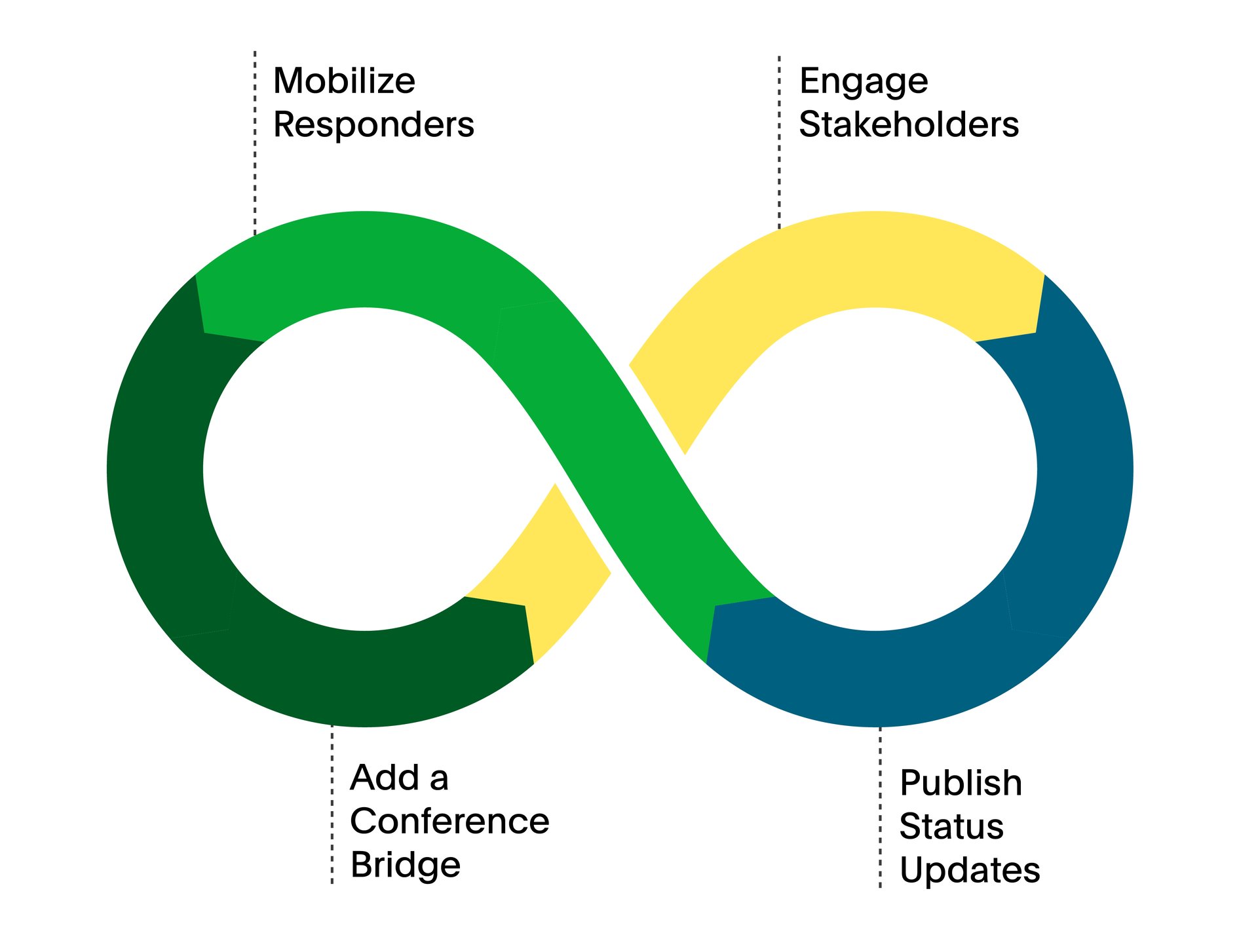- PagerDuty /
- Blog /
- Best Practices & Insights /
- Intelligent Swarming vs. Tiered Support: How Customer Service Teams can use PagerDuty to Swarm Critical Issues
Blog
Intelligent Swarming vs. Tiered Support: How Customer Service Teams can use PagerDuty to Swarm Critical Issues
Most support organizations today adopt some form of the traditional tiered support model. It is one that is based on a process of escalations and customer handoffs. Under this model, customer issues get escalated through multiple levels of a support hierarchy, with three tiers being a common workflow.

In this example of a classic three-tiered support system, Tier 1 is the first line of defense for incoming customer issues and provides generalized technical support. Issues that cannot be resolved by Tier 1 Support get escalated to Tier 2, which has deeper technical knowledge and support skills. If the case still cannot be resolved at this level, it gets escalated to Tier 3 specialists who are the subject matter experts of the affected applications.
While this model works fine for less severe, recurring issues, it doesn’t quite cut it when dealing with high-priority, critical incidents in today’s always-on digital world. Perhaps it’s time that we question the tenets of the traditional support model that is ubiquitous across customer service organizations today.
Since this model is based on a process of escalations and customer handoffs, it’s not surprising to find that it can come with several downsides, including the following:
- Longer time to resolution and First Reply Time. Because all tickets follow the same triaging queue, cases end up sitting with agents who are unequipped to deal with the issue before finally making their way to the right person. This model creates unnecessary delays by placing barriers to the right expert, with crucial context and information about the problem often getting lost along the way.
- Longer backlog items. Customer issues that cannot be resolved at the Tier 1 level enter a queue for the other support tiers. The case goes from being actively worked on in real-time to a backlogged item.
- Reduced accountability. The tiered model is based on a process of escalations and customer handoffs. When frontline staff are expected to escalate issues to experts, it reduces accountability and opportunities to learn from incidents end-to-end.
- Negative customer experience. Anyone who has ever had to repeat a problem to multiple support agents understands the negative impact this has on customer satisfaction.
This is not to suggest that support organizations should do away with the tiered support model. Tiered support can be highly effective for handling less severe issues and one-off questions. But when it comes to critical, high-urgency incidents, the inefficiencies inherent in a tiered model can result in a negative customer experience that ultimately ends in attrition.
Intelligent SwarmingSM provides an alternative framework to the tiered support orthodoxy. It favors real-time work over queued work, collaboration over silos, and case ownership over one-way escalations.1

Under the Intelligent Swarming model, the customer service agent who receives the ticket sees the case through to the end. There is no tiered support hierarchy or customer handoffs. When a ticket cannot be resolved by the agent who owns the case, this person immediately pulls in a team of experts to “swarm” the issue. This targeted approach is known as Intelligent Swarming, where the right people are mobilized at the right time to deliver a coordinated response. This is in contrast to swarming an incident without coordination, where many people may join the response effort but they’re not necessarily the right experts to resolve the issue. Under the Intelligent Swarming framework, the case owner shares information with the team of experts and works together on a resolution.
This model has several benefits:

To turn this theory into practice, customer service agents need access to the right information so they can collaborate with subject matter experts. That means providing them with real-time service disruption data from across the organization. It means establishing bi-directional communications channels to enable two-way communication with Operations teams. And it could mean using machine learning capabilities to identify incidents before they’ve impacted customers.
At PagerDuty, support agents have visibility into the historical context of an incident as well as monitoring data from technical resources, providing a holistic view of an issue to identify the right solution. When agents need help on a ticket, the swarming model can play out in a number of ways, using a set of PagerDuty features designed to swiftly pull in additional help.
Agents can quickly initiate a swarm request in PagerDuty by adding responders to the incident (a feature aptly named “Add Responders”). This immediately loops in the necessary experts from across the organization, with the option to set a conference bridge for collaboration. The additional responders are then notified with their high-urgency notification rules, ensuring that critical issues don’t get missed.

PagerDuty agents also utilize Response Plays—a set of predefined actions to run on an incident with the click of a button—to automate the mundane workflow associated with initiating a swarm. These predefined actions can include adding additional responders, setting a conference bridge, subscribing stakeholders to the incident, and publishing status updates. Response plays can be either automatically run on incidents tied to a specific service, or manually initiated by anyone using PagerDuty to ensure the actions taken are appropriate for the scale of the issue.

Lastly, PagerDuty’s native integrations with ticketing tools such as Zendesk or ChatOps tools such as Slack allow for easy bidirectional communication with Engineering teams. Agents can also trigger a PagerDuty incident from within their tool of choice, eliminating the need to context-switch, and connect with the right team and subject matter experts immediately to fix an issue. By using PagerDuty as an all-in-one response orchestration and collaboration tool, teams can easily swarm an issue and create a simpler, more streamlined experience for both customers and agents alike.

Whether using swarming or tiered practices, there are well-known approaches today to support any customer issue. The good news is by building the right swarming practices ahead of time, you can automatically engage the right expertise at the right moment. It also means automating tiered approaches (e.g., via automated escalation policies and on-call notifications) for less critical issues where immediate response isn’t needed.
In a post-pandemic world that will increasingly be defined by digital innovation and user experience, it’s time to look at new ways to super-charge your customer service function.
- “Intelligent Swarming℠ is a service mark of the Consortium for Service Innovation™.”


